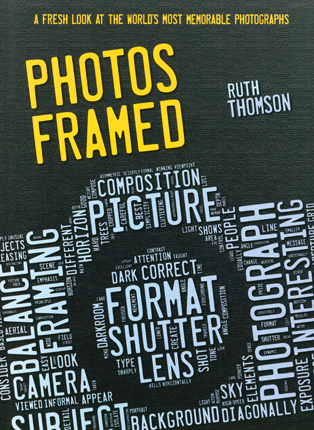Full Text Reviews: School Library Journal - 08/01/2014 Gr 5–8—A brief introduction provides the framework for this slim book, which details 27 photographs under four thematic sections: portraits, nature, and documentary, and art images. Each quality, full-page reproduction sits opposite a page of information that includes a few facts (title, date, and name of the artist), along with a paragraph on the picture, noting its artistic or historical relevance, and one on the photographer discussing his/her medium, subjects, etc. Most of the featured artists are American or European. "Photo Thoughts" are presented as questions, which focus on the artist's decisions and/or the composition. They, and the "Blow Up" and "Zoom In" boxes, which point out additional details, are generally relevant but occasionally superfluous. The selections span a number of years and subjects, offering a look at how the art form developed, and about some of photography's most famous practitioners. For example, under portraits, readers will find a daguerreotype of Louis Daguerre (by Jean-Baptiste Sabatier-Blot, 1844), who produced the first eponymous permanent photograph. Nature photography highlights Eadweard Muybridge's "The Horse in Motion" (1878), which is credited as one of the precursors to high-speed photography and film. Modern images and artists are represented in work of Martin Parr, David Hockney, and Cristina Garcia Rodero. Brad Finger's 13 Photos Children Should Know (Prestel, 2011) features fewer pictures and is more subjective in tone, while each title in Capstone's superlative "Captured History" series offers an in-depth look at one image of historical significance. Consider Framed for collections needing an introduction to the topic.—Daryl Grabarek, School Library Journal - Copyright 2014 Publishers Weekly, Library Journal and/or School Library Journal used with permission. Bulletin for the Center... - 09/01/2014 Sidestepping formal exegesis on photographic history and technique, Thomson invites readers simply to engage directly with twenty-seven well-known images that elicit critical and emotional response. She divides her work into four sections-portraits, nature, art, and documentary-occasionally inserting a question or remark that encourages viewers to see beyond these tidy demarcations. Each beautiful reproduction is accompanied by a single facing page that includes title and date or work, photographer, two brief paragraphs of background on the image and its creator, “Blow Up” and “Zoom In” inset boxes, and a trio of open-ended questions to start the wheels turning. The springboard questions laudably avoid cookie-cutter formatting, focusing instead on attributes or puzzles unique to a particular work. The result is a wide-ranging set of inquiries, from the intellectual property concern around Gjon Mili’s photograph of Pablo Picasso creating an ephemeral work of illumination, to provocative speculation regarding Ansel Adams’ “The Tetons and the Snake River” (“Why do you think this picture was chosen as one of the 115 images sent aboard the Voyager spacecraft into outer space?”). The final entry, Martin Parr’s “Barcelona,” which features a group of camera-wielding tourists bent on documenting their encounter with Gaudí architecture, is a clever wrap up, asking “Do you think that taking photographs is the best way to hold on to an experience?” Hmmm. How about that selfie? Glossary, index, and, of course, photo credits are included. EB - Copyright 2014 The Board of Trustees of the University of Illinois. Loading...
|



